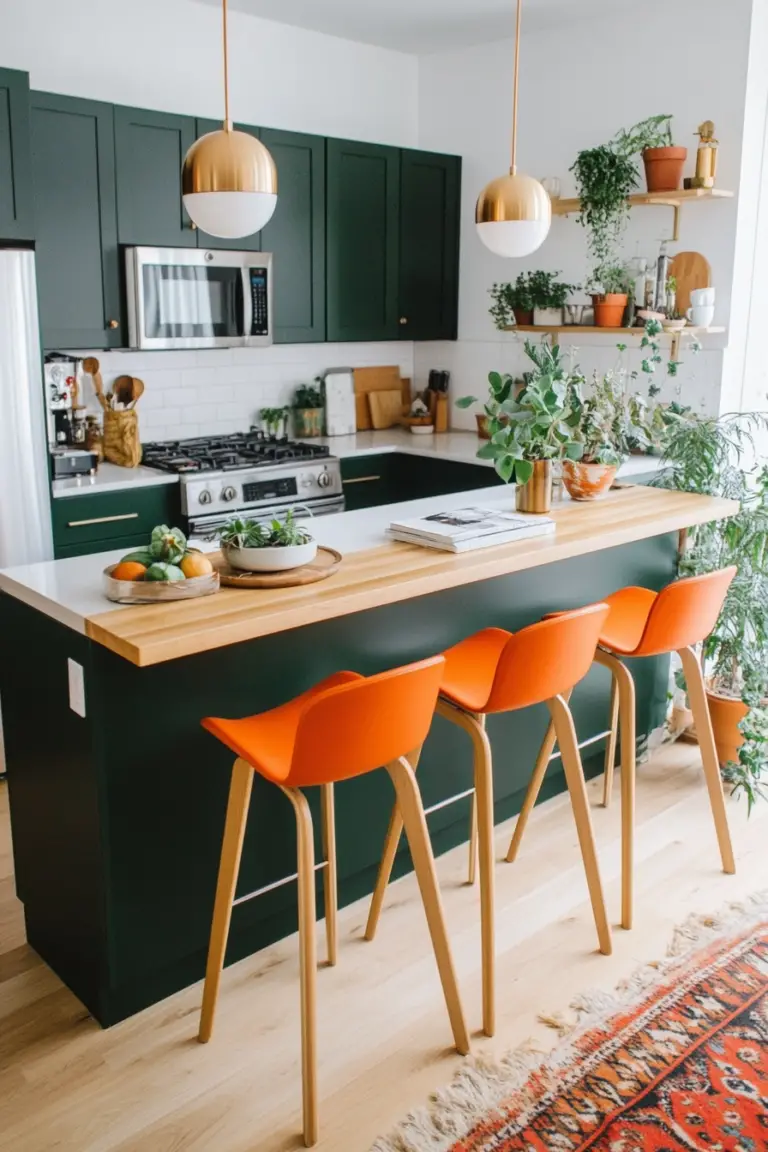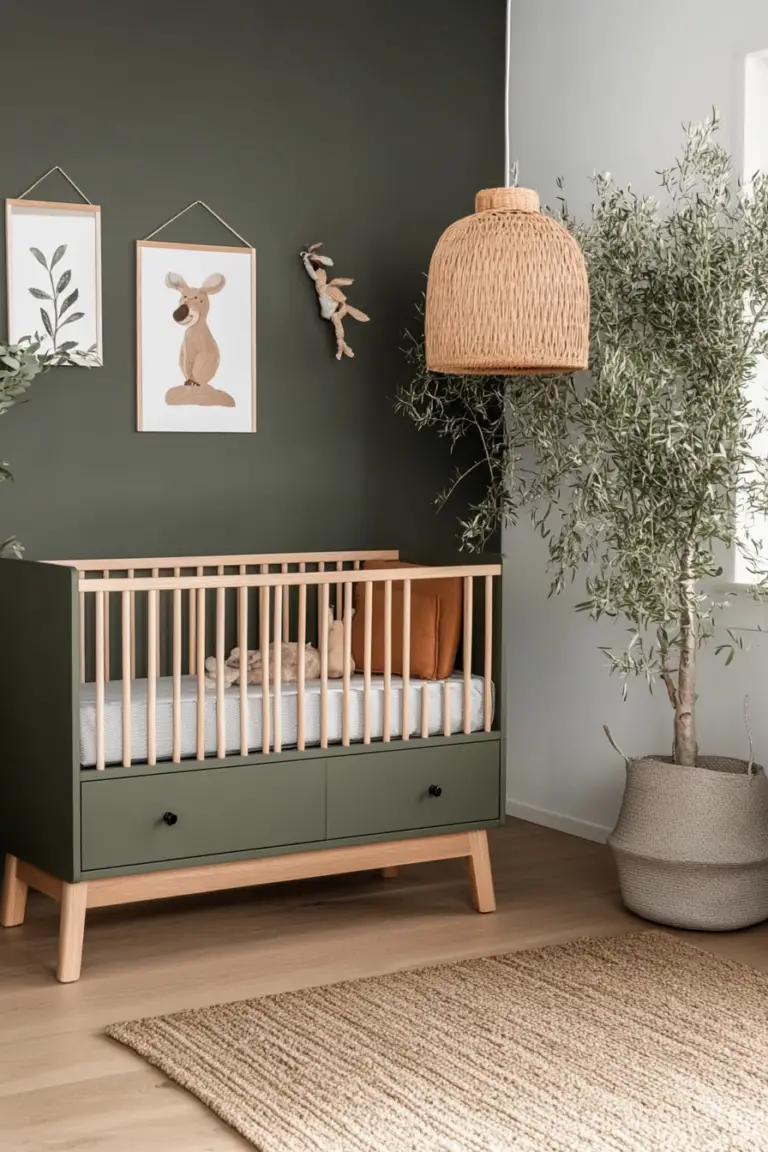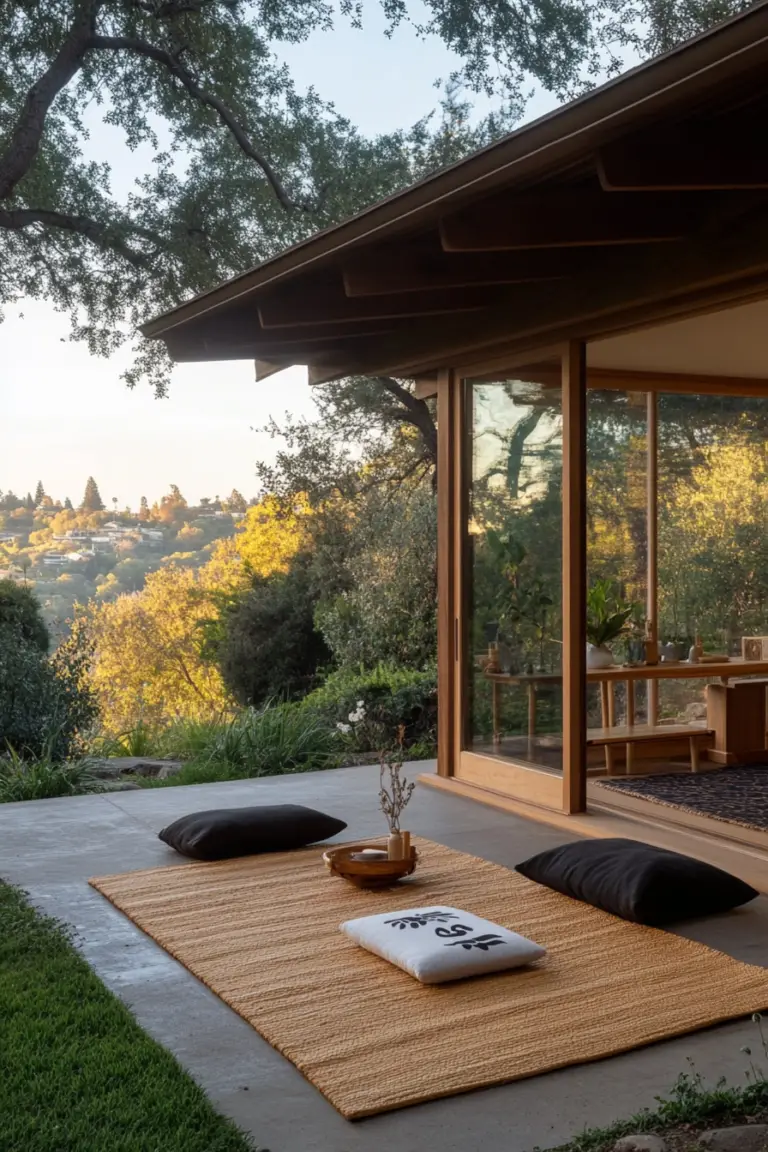Clever Ideas for a Thriving Terrace Garden
Think your terrace is too small for a garden? Think again! Even the tiniest spaces can transform into lush green retreats with a bit of creativity.
- Go vertical: Install hanging pots, wall planters, or trellises for climbing plants like ivy or jasmine. These not only save space but also add visual interest.
- Multi-level planters: Use tiered shelves or stackable pots to grow more plants in less area.
Short on time? Start with low-maintenance plants like succulents or ferns, which are perfect for small terraces. Remember, it’s not about the size of your garden—it’s about the love you pour into it!
The Best Plants for Hot Climates
If you live in a region where the sun feels relentless, don’t let that stop you from starting a terrace garden. Some plants actually thrive in the heat and will bring a touch of green to your space without breaking a sweat (or requiring too much water).
Top picks for hot climates:
- Succulents and cacti: These hardy plants love the sun and are nearly impossible to kill.
- Bougainvillea: Their bright colors and low water needs make them a favorite for sunny terraces.
- Herbs like rosemary and thyme: Not only are they drought-tolerant, but they also make your terrace smell amazing.
Tip: Use light-colored pots to reflect heat and mulch to keep the soil cool. A little planning goes a long way in keeping your garden alive and thriving.
Watering Wisely in Cities With Limited Rainfall
Worried about how to keep your plants hydrated in dry conditions? Urban gardening comes with unique challenges, but with a few smart strategies, you can create a water-efficient terrace garden that’s sustainable and vibrant.
Here’s how:
- Drip irrigation systems: These deliver water directly to the roots, minimizing waste.
- Mulching: Add a layer of organic mulch (like dried leaves or straw) to retain soil moisture and reduce evaporation.
- Rainwater harvesting: Install a simple rainwater collection system to store water for your plants during dry spells.
Pro tip: Choose native or drought-resistant plants—they’re naturally adapted to thrive in your climate. With the right techniques, you won’t have to worry about watering every day, even in hot or dry weather.
1. Vertical Herb Garden with Colorful Pots
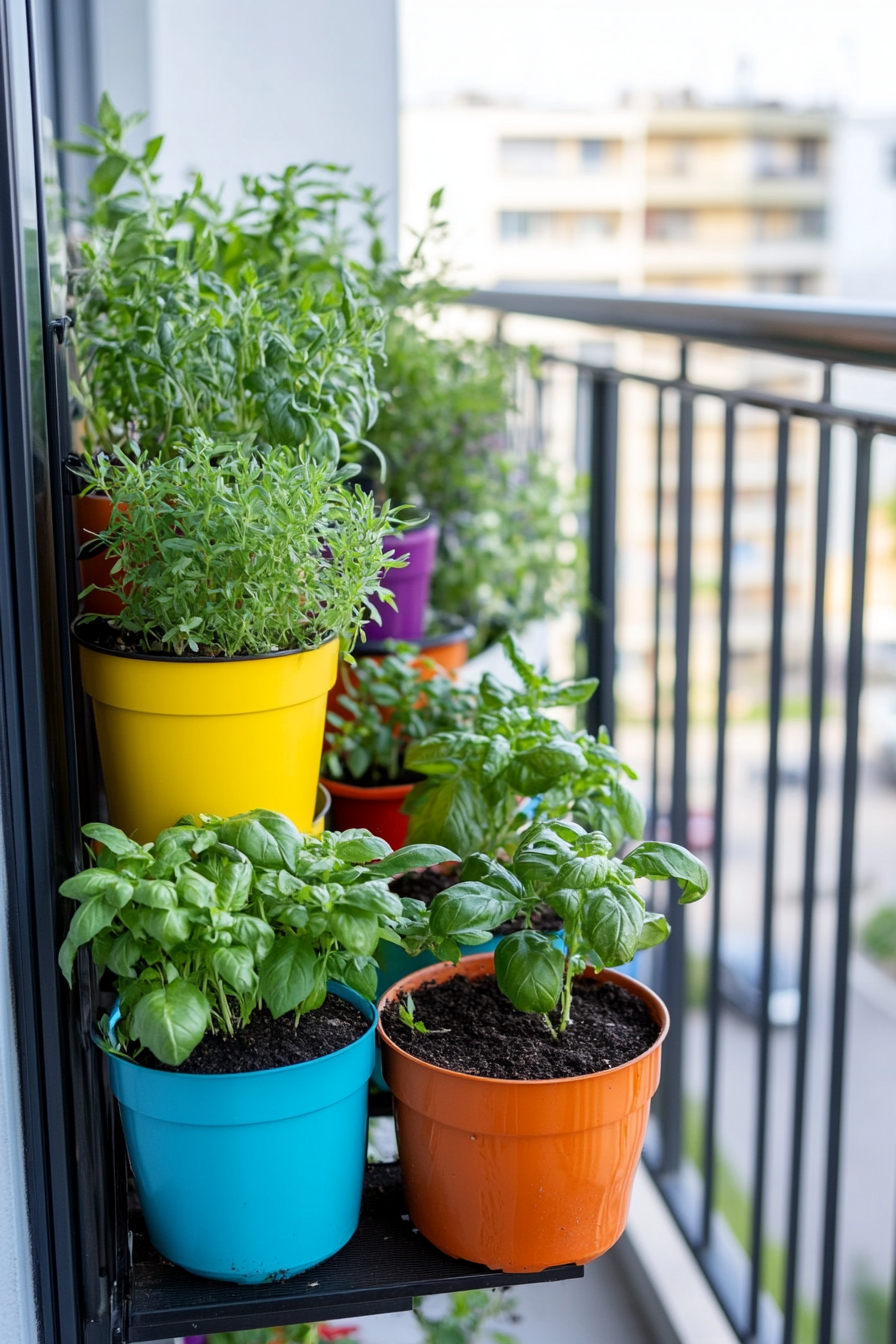
Transform an ordinary terrace wall into a dynamic and efficient herb-growing station by using brightly colored pots stacked vertically. This approach not only saves floor space but also adds a lively pop of color. From mint and basil to thyme and rosemary, you can grow your favorite herbs for cooking right at your fingertips.
Use sturdy hanging racks or wall-mounted shelving to accommodate the pots, ensuring easy watering and care. Make a habit of rotating the pots occasionally for even sunlight distribution. This charming garden style allows you to experiment with pot colors, plant varieties, and artistic placement.
Things You Need:
- Space-Saving Racks: Opt for narrow, multi-tier wall racks or vertical panels made from lightweight materials.
- High-Quality Pots: Choose ceramic or recycled plastic pots with drainage holes to prevent root rot.
- Balanced Soil Mix: Look for a potting blend that provides good drainage and nutrients.
- Consistent Watering Routine: Install a drip irrigation system or water by hand regularly.
Bonus Tip: Use different pot colors or labels to quickly identify each herb and keep your gardening fun.
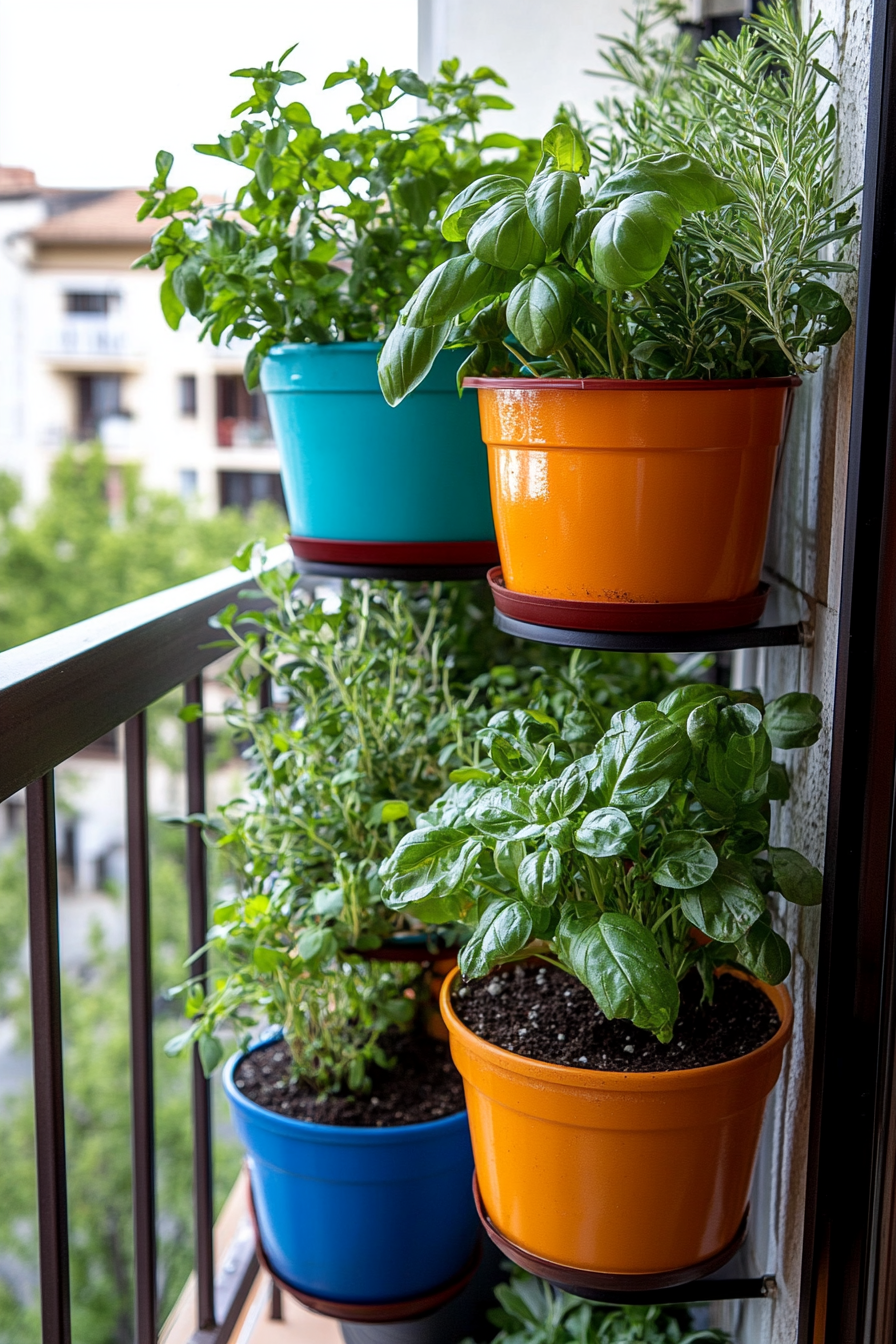
2. Wooden Planters for a Rustic Aesthetic

Give your terrace a cozy, countryside appeal with wooden planters. These planters can be made from reclaimed pallet wood or newly treated lumber, lending a charming, rustic vibe. Pair them with complementary plants—like lavender or ornamental grasses—to emphasize the natural look.
By choosing weather-resistant wood and applying a protective sealant, you’ll extend the life of your planters. Arrange them in different heights and shapes to break the monotony and create a layered landscape on your terrace.
Things You Need:
- Quality Timber: Opt for cedar or teak, known for their durability in outdoor conditions.
- Protective Sealant: Apply a water-based outdoor sealant to shield the wood from moisture.
- Drainage Management: Ensure each planter has proper drainage holes to prevent over-watering.
- Layered Soil Mix: Use a mixture of compost and potting soil for nutrient-rich beds.
Bonus Tip: Add small pebbles or crushed gravel at the base of each planter for improved drainage and a polished appearance.
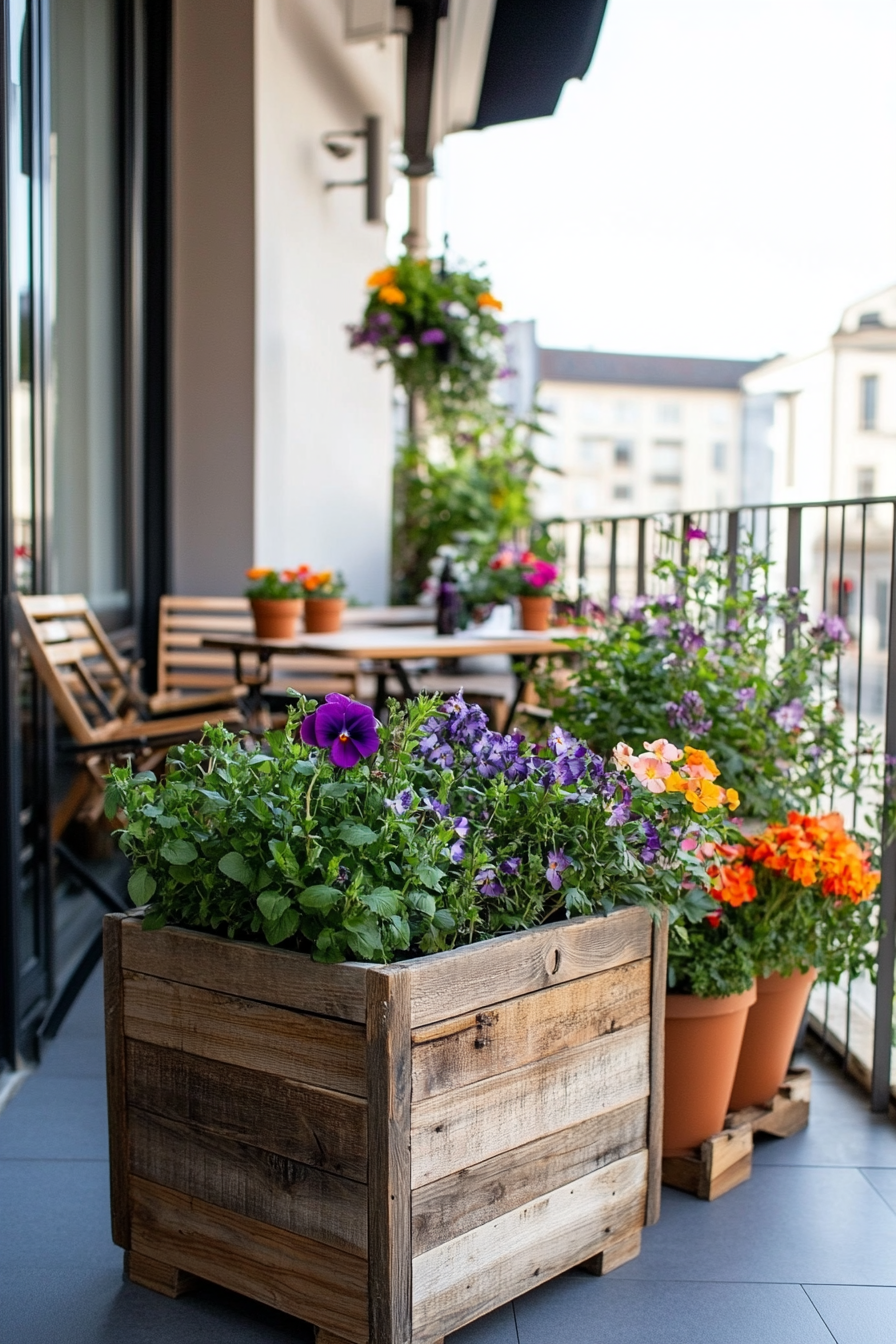
3. Modern Minimalist Terrace Garden with Succulents

For a sleek and low-maintenance look, incorporate succulents into a modern terrace design. Succulents come in a wide array of shapes, colors, and sizes, making them perfect for creating eye-catching arrangements without overwhelming the space. Think potted echeverias, haworthias, and tall sansevierias for vertical interest.
Their water-storing capabilities mean they require minimal care—just place them in well-draining pots and position them in spots with ample sunlight. Combine metal planters or concrete containers for an edgy, minimalist aesthetic.
Things You Need:
- Succulent Selection: Pick hardy varieties that thrive in your climate zone.
- Well-Draining Mix: Use cactus or succulent soil to prevent root rot.
- Strategic Lighting: Place succulents where they can receive adequate sun, roughly 4-6 hours daily.
- Modern Containers: Opt for clean-lined pots in neutral colors like black, white, or gray.
Bonus Tip: Group succulents together in a single large planter for a stylish, sculptural focal point.

4. Japanese Zen Garden with Rock Decor

Bring tranquility to your terrace with a Japanese-inspired Zen garden. Key features include gravel or sand spread out to mimic ripples in water, complemented by carefully placed rocks and low-maintenance greenery like dwarf conifers or moss. This design invites reflection and a sense of calm.
Use bamboo or wooden screens for privacy and to enhance the serene atmosphere. You can also add small statues or lanterns for a personal touch. Raking patterns in the gravel can be a meditative experience that helps clear your mind.
Things You Need:
- Fine Gravel or Sand: Use light-colored gravel for a bright, reflective look.
- Stone Accents: Choose smooth or rugged rocks to arrange as focal points.
- Minimal Plants: Incorporate low-growing moss or dwarf shrubs for subtle greenery.
- Bamboo Elements: Add a bamboo fence or simple water feature to emphasize the Zen feel.
Bonus Tip: Keep a small rake handy to reshape the gravel whenever you need a mindful break.

5. Hanging Plants for a Lush Green Canopy

Maximize vertical space and create a gorgeous overhead canopy by hanging potted plants from beams or brackets. Trailing varieties like pothos, spider plants, and ferns work wonders for adding visual depth and a sense of lushness. This setup also helps free up floor space for other terrace furniture or features.
Consider grouping your hanging plants at different heights for a layered, dramatic effect. If your terrace is prone to harsh sunlight, select hardy species that can handle direct exposure, or install partial shading to protect more delicate plants.
Things You Need:
- Robust Hanging Hardware: Use sturdy hooks or brackets capable of supporting your plant’s weight.
- Lightweight Planters: Opt for materials like plastic or coco liners to minimize strain on supports.
- Trailing Plant Varieties: Pick greenery known for long, cascading vines.
- Consistent Pruning: Trim dead leaves and overly long stems to keep plants healthy.
Bonus Tip: Use decorative macramé hangers for a boho-chic look that doubles as art.

6. Fairy Light Decor for Evening Charm
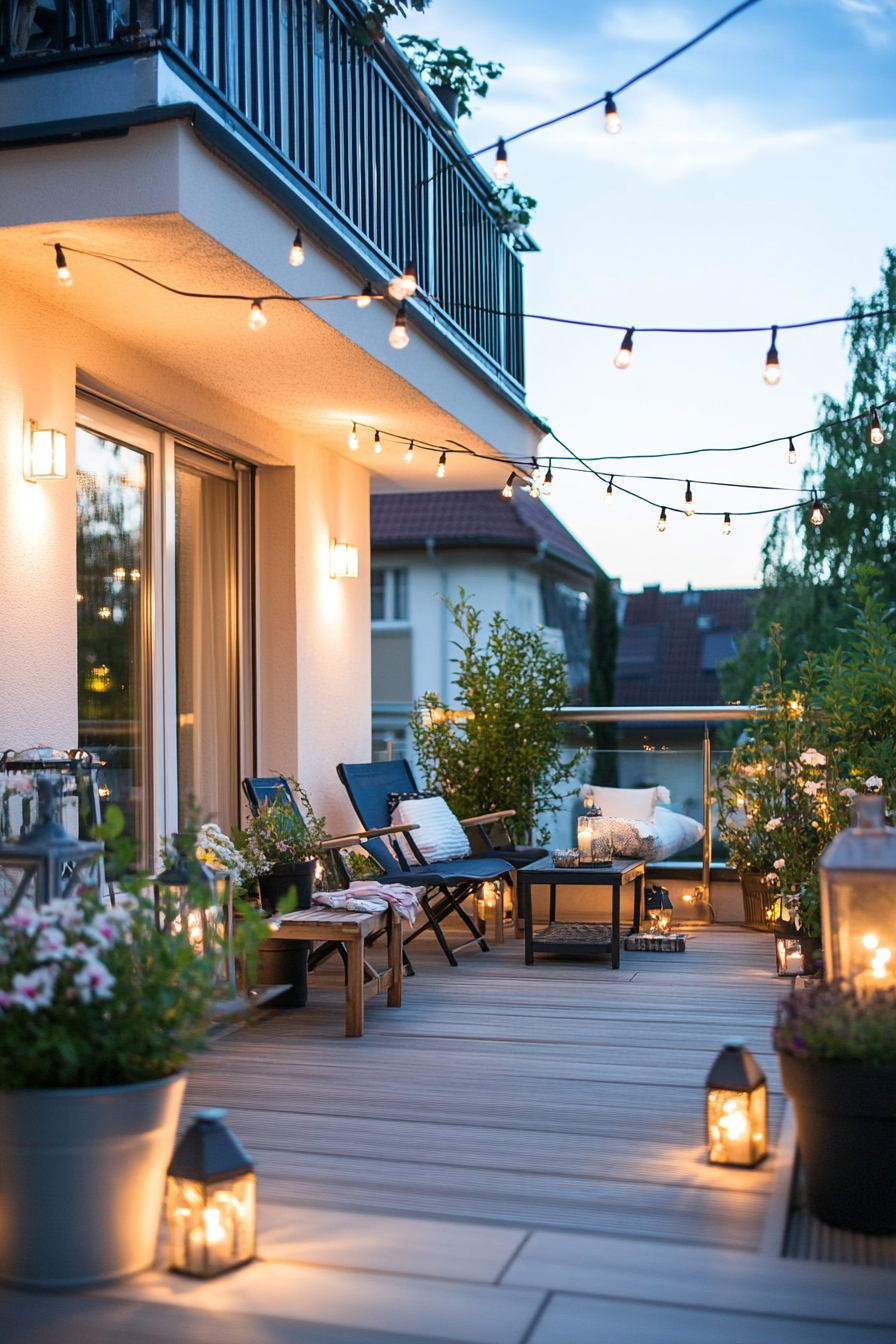
Add a magical touch to your terrace garden by integrating string lights or fairy lights. Drape them around railings, weave them through trellises, or hang them overhead to create a soft, twinkling glow. This not only brightens your outdoor space after sunset but also enhances the ambience for evening gatherings or quiet reflection.
Choose LED lights for energy efficiency and longevity. Experiment with warm or cool light temperatures to find the perfect vibe for your terrace. Pair with candles or lanterns for an even more enchanting effect.
Things You Need:
- Weatherproof Lights: Ensure the string lights are rated for outdoor use.
- Extension Cords: Safely organize cords away from walkways to avoid tripping hazards.
- Hooks and Clips: Make hanging easy with removable clips or hooks.
- Timer or Smart Plug: Automate the lights for a hassle-free schedule.
Bonus Tip: Use solar-powered fairy lights to cut down on electricity costs and reduce your carbon footprint.

7. Raised Vegetable Beds for Urban Farming

Grow your own fresh produce right on your terrace with raised vegetable beds. Elevated planters make it easier to control soil quality, manage pests, and ensure sufficient drainage. Plus, the added height relieves stress on your back when planting or harvesting.
Consider vegetables like tomatoes, peppers, leafy greens, or herbs that adapt well to container environments. With proper sunlight and consistent watering, you’ll soon be enjoying homegrown flavors at your dinner table.
Things You Need:
- Durable Planter Materials: Choose cedar or composite wood for longevity.
- Rich Soil Mix: Incorporate compost and organic matter for fertile growing conditions.
- Accessible Pathways: Ensure you have enough room to move around the beds for maintenance.
- Pest Protection: Use netting or companion planting to naturally deter pests.
Bonus Tip: Rotate your crops each season to maintain soil health and maximize yields.

8. Tropical Vibe with Palms and Banana Plants

Nothing screams vacation like a lush, tropical oasis. Bring that vibe to your terrace by featuring palm trees, banana plants, and other broad-leaved greenery. Large foliage provides shade and creates an immersive jungle-like atmosphere. Complement the greenery with bold, colorful flowers like hibiscus or birds of paradise for an extra pop.
To maintain that verdant look, make sure your tropical plants receive ample moisture and warm temperatures. If you live in a cooler climate, consider dwarf varieties and use containers that can be moved indoors during colder months.
Things You Need:
- Heat-Loving Plants: Select species tolerant of high humidity and direct sun.
- Regular Fertilization: Use a balanced, slow-release fertilizer to encourage lush growth.
- Sufficient Watering: Keep soil moist but not waterlogged, especially for banana plants.
- Wind Protection: Shield taller palms from strong winds or use stable planters to prevent tipping.
Bonus Tip: Add a small tiki-themed décor element or rattan furniture to fully embrace the tropical ambiance.

9. Flowering Vines for a Natural Privacy Screen

If you’re seeking privacy without sacrificing style, flowering vines can be an elegant solution. Plants like jasmine, bougainvillea, or morning glories can quickly cover trellises and railings, forming a living wall that’s both attractive and functional.
Install sturdy supports to guide the vines, and prune them regularly to maintain shape and encourage healthy blooms. Their fragrant flowers can also enhance the overall sensory experience of your outdoor haven.
Things You Need:
- Climbing Structures: Use trellises, arches, or wire grids for vines to latch onto.
- Fast-Growing Varieties: Pick vines suited to your local climate to ensure vigorous growth.
- Periodic Pruning: Keep vines tidy and manageable to prevent them from overwhelming the space.
- Proper Watering: Most climbing plants need consistent moisture, especially when blooming.
Bonus Tip: Mix different vine species with staggered blooming periods for a continuously floral backdrop.

10. Garden Seating Surrounded by Fragrant Flowers

Create a cozy corner on your terrace with comfortable seating enveloped by sweet-smelling blooms. Incorporate fragrant favorites like roses, gardenias, or lavender around a loveseat, bench, or small bistro set. This design invites relaxation and conversation in a soothing environment.
Don’t overlook practical details such as weather-resistant cushions and a small side table for drinks or reading materials. The combination of fragrant flowers and plush seating transforms your terrace into a personal sanctuary.
Things You Need:
- Comfortable Furniture: Pick moisture-resistant cushions and sturdy outdoor seating.
- Fragrant Plants: Place highly aromatic blooms like jasmine or lilac near seating areas.
- Clustered Arrangement: Group plants around your seating for an immersive experience.
- Shade Solutions: Use umbrellas or a pergola to protect you and your flowers from harsh sun.
Bonus Tip: Incorporate subtle lighting like lanterns or path lights to enjoy the space even after sunset.

11. Small Water Fountain for a Tranquil Touch

Elevate the serenity of your terrace by adding a compact water fountain. The gentle sound of trickling water can mask city noise and introduce a calming ambiance. Fountains come in a variety of designs—modern stainless steel, ceramic bowls, or natural stone—to match your preferred aesthetic.
Choose a model that recirculates water to conserve resources and requires minimal plumbing. Position it near seating areas to fully appreciate the soothing sound of flowing water as you unwind outdoors.
Things You Need:
- Self-Contained Fountain: Go for one with a built-in pump and reservoir.
- Stable Surface: Ensure your terrace floor can handle the fountain’s weight.
- Power Access: Plan for an electrical outlet if your fountain requires a pump.
- Regular Maintenance: Clean and refill the water to prevent algae growth.
Bonus Tip: Surround the fountain base with pebbles or small potted plants for added visual interest.

12. Potted Citrus Trees for Vibrant Color

Brighten up your outdoor space with potted citrus trees like lemons, oranges, or limes. Their glossy green leaves and cheerful fruits bring a Mediterranean flair that can transport you to sunnier climes. Plus, the blossoms often emit a delightful fragrance.
Choose dwarf varieties if space is limited. Position them in a spot that gets plenty of direct sunlight. Regular feeding with a citrus-specific fertilizer will ensure bountiful blooms and fruit.
Things You Need:
- Large Containers: Citrus trees require ample root space for healthy growth.
- Sunshine: Place them in an area receiving at least 6 hours of sunlight daily.
- Acidic Soil: Citrus trees thrive in slightly acidic, well-draining soil.
- Frequent Fertilization: Use a high-nitrogen fertilizer formulated for citrus plants.
Bonus Tip: Prune lightly after harvest to maintain shape and encourage new growth.

13. Green Walls for Space-Efficient Gardening

Turn a bare terrace wall into a living tapestry by installing a green wall system. These vertical gardens make brilliant use of limited space and can improve air quality. Choose a diverse range of plants—ferns, pothos, and herbs—to add both greenery and functionality.
Most modern green wall units come with built-in irrigation. This ensures your plants receive consistent moisture without needing constant manual watering. Combine different textures and leaf shapes for a layered, visually appealing look.
Things You Need:
- Modular Panels: Purchase ready-made or DIY vertical planters that fit your space.
- Automatic Irrigation: Use drip systems or smart watering for ease and efficiency.
- Lightweight Soil Mix: Avoid overloading the wall structure with heavy soil.
- Periodic Maintenance: Prune and replace plants as needed to keep the wall fresh.
Bonus Tip: Incorporate trailing plants near the top of the wall for a cascading effect.
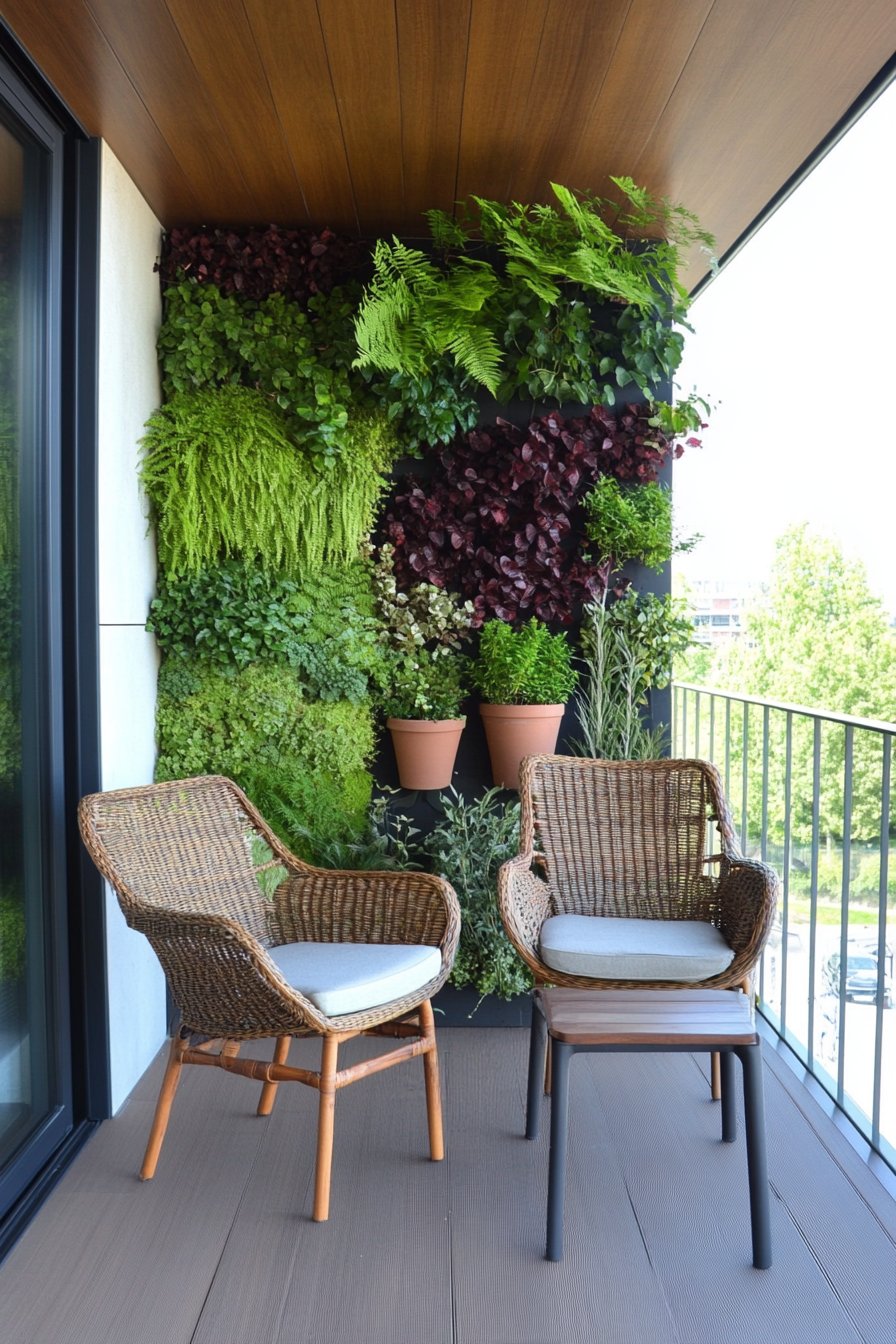
14. Aromatic Herb Corners for Culinary Use

Designate a small corner of your terrace exclusively for herbs you frequently use in the kitchen. Group sage, rosemary, thyme, and oregano in matching pots or a planter box. The convenience of stepping outside to pick fresh herbs will elevate your cooking, while also adding natural fragrance to your outdoor space.
Place these plants in an area with adequate sunlight, and be mindful of each herb’s watering needs—some thrive with less frequent watering, while others prefer more consistent moisture. Label the pots or use decorative markers for easy identification.
Things You Need:
- Sunlit Spot: Most herbs require 4-6 hours of direct sunlight.
- Individual Containers: Separate certain herbs to accommodate varying moisture needs.
- Good Drainage: Prevent root rot by choosing pots with drainage holes.
- Regular Harvesting: Pinch off leaves often to promote fresh growth.
Bonus Tip: Plant companion herbs together—for example, basil near tomatoes—for a symbiotic flavor boost in the garden and kitchen.

15. Eco-Friendly Composting Station for Organic Waste

Close the loop on your gardening efforts by setting up a compact composting station on your terrace. A small compost bin or tumbler can transform kitchen scraps and yard waste into nutrient-rich compost for your plants. This not only reduces household waste but also enhances the soil quality in your planters.
Choose a bin designed for balconies or terraces, ensuring it’s odor-proof and space-efficient. Regularly turn or mix your compost to speed up the decomposition process. In a matter of weeks to months, you’ll have homemade fertilizer ready to enrich your terrace garden.
Things You Need:
- Compact Compost Bin: Look for models specifically designed for small spaces.
- Balanced Waste Mix: Include a mix of “green” (food scraps) and “brown” (dry leaves, paper) materials.
- Aeration Tools: A hand crank or pitchfork helps mix compost to accelerate breakdown.
- Moisture Control: Keep compost damp but not soaked to foster microbial activity.
Bonus Tip: Add crushed eggshells to your compost for a calcium boost that benefits many plants.

